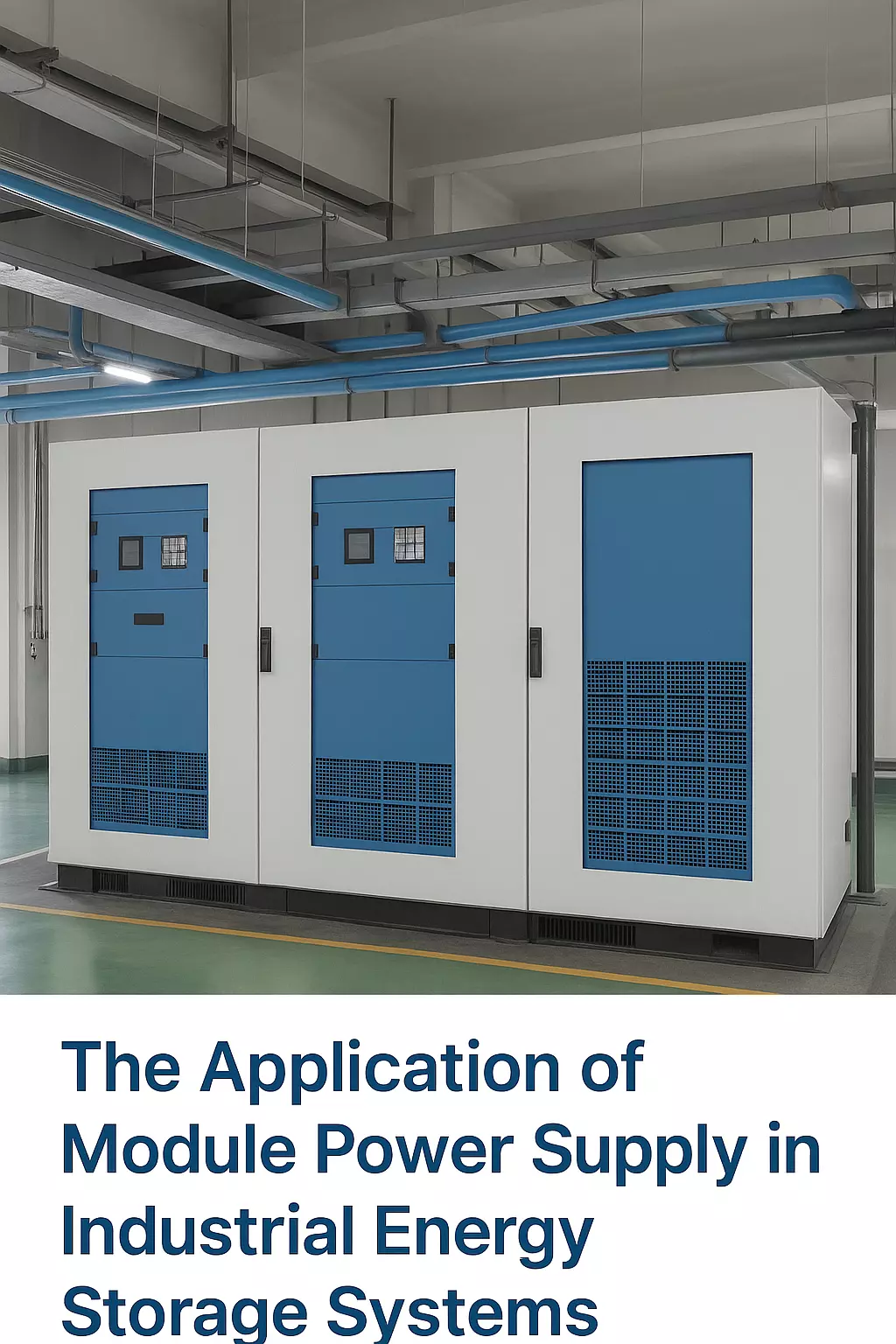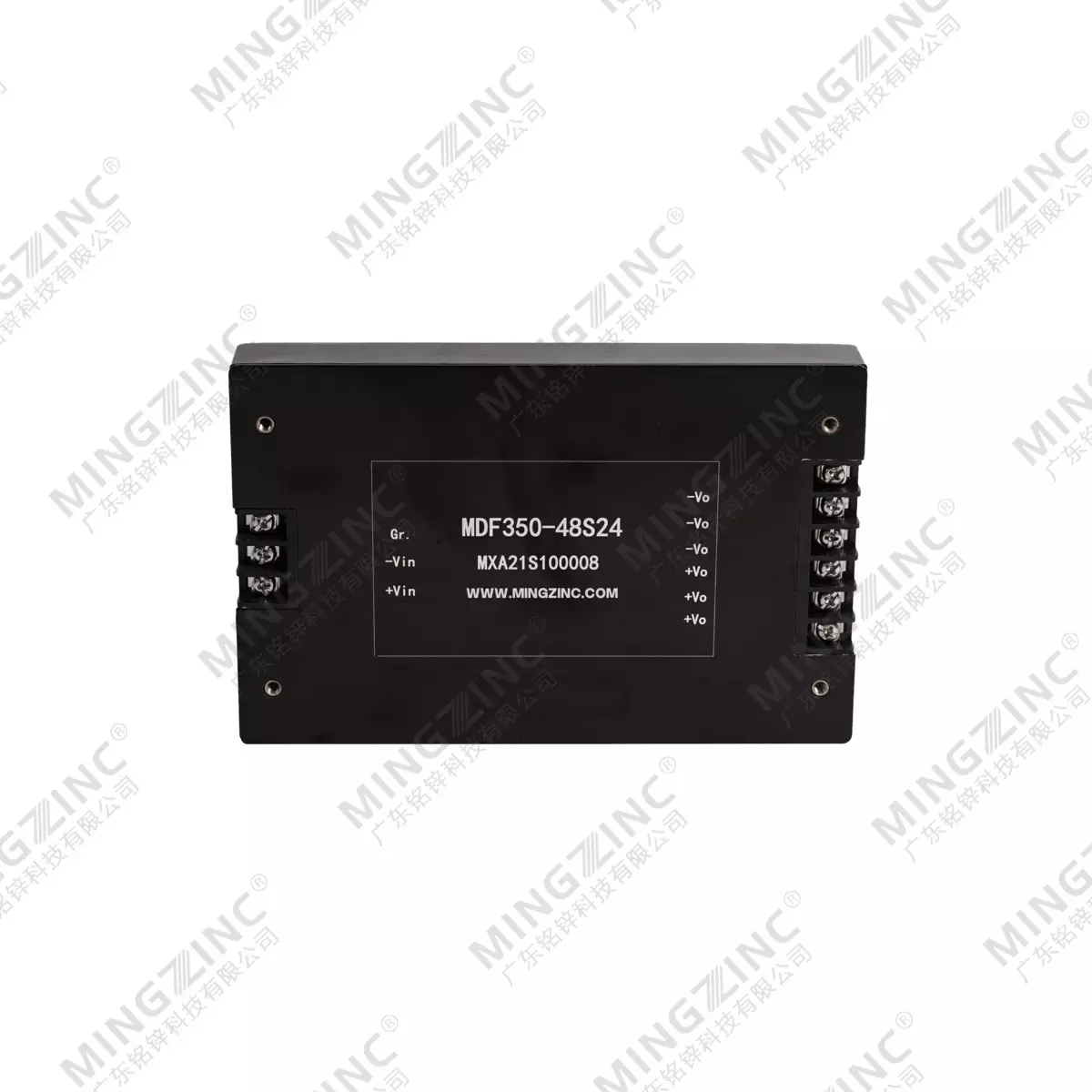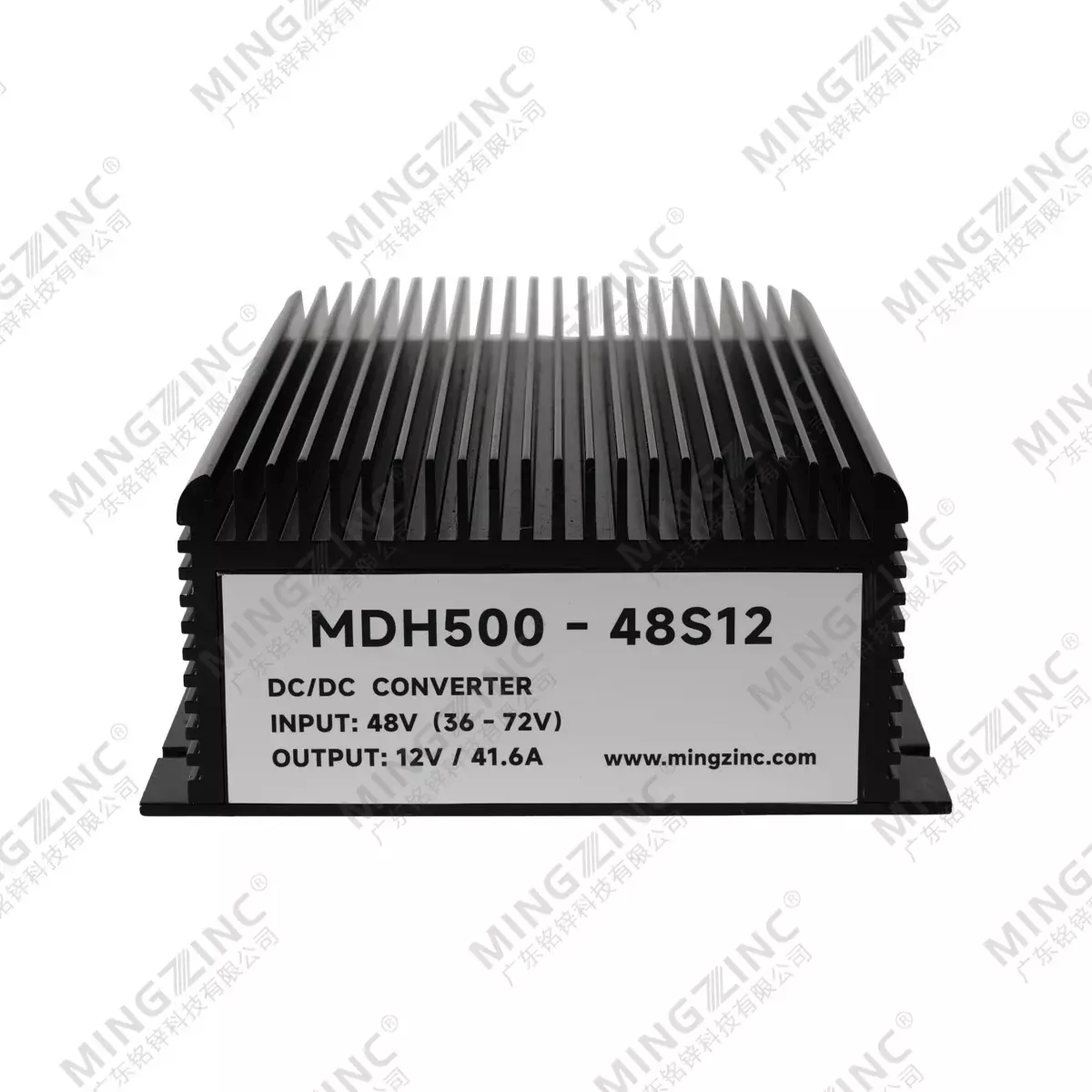The Application of Module Power Supply in Industrial Energy Storage Systems
1. What is Industrial Energy Storage?
Industrial energy storage refers to large-scale systems designed to store and release electrical energy for commercial, industrial, and utility-scale applications. These systems play a crucial role in stabilizing the power grid, supporting renewable energy integration, and optimizing energy use in large facilities.
1.1 Definition and Characteristics
Industrial energy storage systems (IESS) typically feature:
-
Large capacity (ranging from hundreds of kWh to MWh)
-
High discharge rates
-
Grid-scale connectivity
-
Demanding environmental requirements (outdoor, high heat, vibration)
1.2 Key Differences vs. Residential Energy Storage
| Feature | Residential Storage | Industrial Storage |
|---|---|---|
| Capacity | 5–20 kWh | 100 kWh – 100+ MWh |
| Voltage | 48V – 400V | 600V – 1500V |
| Use Cases | Home backup, solar systems | Grid support, peak shaving |
| Redundancy/Fault Tolerance | Basic | Mission-critical |
1.3 Working Principle
IESS stores electricity (from the grid or renewable sources) in battery banks and releases it during peak demand or outages. Energy is controlled via:
-
Battery Management System (BMS)
-
Energy Management System (EMS)
-
Power Conversion Systems (PCS)
-
Module Power Supplies (MPS) – enabling stable and scalable energy flow

2. Current Global Trends in Industrial Energy Storage
2.1 Market Growth
According to BloombergNEF, global industrial energy storage deployment reached 50.7 GWh in 2024 and is projected to exceed 120 GWh by 2028, with major drivers including decarbonization policies and energy cost optimization.
2.2 Leading Countries
| Rank | Country | Annual Industrial ESS Deployment (GWh, 2024) |
|---|---|---|
| 1 | China | 19.6 |
| 2 | United States | 11.3 |
| 3 | Germany | 6.1 |
| 4 | South Korea | 3.8 |
| 5 | Japan | 2.4 |
Source: BloombergNEF, 2024 Global Energy Storage Outlook
2.3 Use Cases Across Industries
-
Manufacturing plants: reduce peak electricity charges
-
Data centers: ensure uninterrupted power supply (UPS)
-
Solar/wind farms: stabilize renewable output
-
Commercial buildings: participate in demand response programs
Recommended reading: The Role of Modular Power Supply in Modern Home Energy Storage Systems
3. Role of Module Power Supply in Industrial Energy Storage
3.1 Electrical Architecture
Module power supplies are a foundational component in IESS, enabling the conversion, distribution, and regulation of power between subsystems. Key areas of application:
-
DC-DC conversion for battery pack balancing
-
Auxiliary power for BMS/EMS/communication units
-
High-voltage isolation and redundancy control
-
Scalable modular expansion for capacity growth
3.2 Module Selection Based on Storage Type
| Energy Storage Type | Module Power Supply Requirements |
|---|---|
| Lithium-ion battery | High efficiency, low noise, fast response |
| Flow battery | High voltage isolation, continuous operation |
| Sodium-sulfur battery | High-temperature resistance, rugged design |
| Flywheel storage | Pulse power support, EMI protection |
3.3 When Do You Need Customized Module Power Supplies?
Not all industrial energy storage systems can rely on off-the-shelf power modules. Customization becomes essential in scenarios such as:
-
Non-standard voltages
-
Extreme environments
-
System integration
-
Compact space
Case Study – Customized HV Module for Desert ESS (UAE, 2023)
A 2.5MWh desert-based solar + storage project required high-temperature modules (up to 75°C ambient) with CAN-bus compatibility. Our engineering team delivered 3kW power modules with active thermal management and shock-resistant enclosures, increasing MTBF by 38%.
3.4 Key Indicators of a High-Quality Module Power Supply
| Indicator | Industry Standard | Recommended Value for IESS |
|---|---|---|
| Efficiency (Full Load) | ≥ 90% | ≥ 94% |
| MTBF | ≥ 100,000 hours | ≥ 200,000 hours |
| Output Voltage Ripple | < 1% | < 0.5% |
| Operating Temperature Range | 0°C – 50°C | -40°C – +85°C |
| EMI Compliance | EN55032 Class B | Class A or better |
| Isolation Voltage | ≥ 1.5kV | ≥ 3kV |
3.5 The Impact of Poor-Quality or Missing Power Modules
Neglecting the importance of module power supplies or using substandard components can result in:
-
System instability
-
Thermal overloads
-
Failure propagation
-
Reduced ROI
According to an IHS Markit 2023 report, 27% of industrial ESS downtime incidents were traced back to auxiliary power subsystem failures—primarily due to poor module power supply design or quality.
4. Key Considerations for Selecting Module Power Supplies in Industrial ESS
Selecting the right module power supply is crucial for building a reliable and efficient industrial energy storage system (ESS). A poor choice can lead to overheating, unstable operation, or even catastrophic failure. Below are the primary technical and practical factors to consider:
4.1 Power, Voltage, and Current Ratings
-
Match the voltage range and output power of the module with the battery system (often 600V to 1500V DC).
-
Select wide input range modules for grid-interactive systems, as input voltages may fluctuate.
-
Ensure current handling capacity meets peak charge/discharge rates.
4.2 Efficiency vs. Heat Management
-
Higher efficiency (≥94%) reduces thermal buildup and improves overall energy yield.
-
In enclosed ESS containers, lower conversion loss is vital to reduce cooling system load.
| Power Rating | Typical Efficiency | Thermal Load Generated |
|---|---|---|
| 500W | 92% | ~40W waste heat |
| 1000W | 94% | ~60W waste heat |
| 3000W | 95% | ~150W waste heat |
Choosing a 94–96% efficient module can reduce thermal stress by 20–30%, extending lifespan.
4.3 Physical Dimensions & Mounting
-
For high-density energy cabinets or mobile systems, compact form factors with DIN-rail or chassis-mount designs are preferred.
-
Modularized rack or hot-swap support improves serviceability and scalability.
4.4 Cost vs. Reliability Balance
-
While cost is important, consider TCO (Total Cost of Ownership), including:
-
Lifespan
-
Downtime cost
-
Replacement cycles
-
-
Premium modules with long MTBF and better component tolerances can save 20–40% over 10 years.
4.5 Environmental & Regulatory Compliance
Ensure power modules comply with:
-
IEC/UL safety standards (e.g., UL62368-1)
-
EMI/EMC directives (EN55032/35, FCC)
-
RoHS & CE for environmental compliance

5. The Risks of Using Inadequate or Missing Power Modules
A robust industrial ESS relies heavily on stable power conversion. Underspecified or missing module power supplies can trigger system-wide issues that compromise safety and efficiency.
5.1 Functional Disruptions
-
BMS/EMS Malfunction: Insufficient or unstable auxiliary voltage can disable monitoring systems.
-
Sensor Drift: Fluctuating reference voltages lead to incorrect readings.
-
Inverter Control Errors: Affects charge/discharge coordination with the grid.
Real Case (2023): A 1MWh lithium battery farm in Southeast Asia suffered two unplanned shutdowns in three months due to fluctuating auxiliary voltage from a low-cost 24V module. Replacing with an industrial-grade unit resolved the issue permanently.
5.2 Reduced Reliability & Increased Maintenance
-
Cheap modules often lack:
-
Proper filtering
-
Overvoltage/overcurrent protection
-
Industrial-grade capacitors (≥10,000h@105°C)
-
-
These deficiencies lead to shorter service life and frequent downtime.
5.3 Safety Hazards
-
Thermal runaway risks in batteries increase with unstable voltages.
-
Poor isolation design can cause electrical cross-talk or arc flash in high-voltage racks.
5.4 System Performance Degradation
| Fault Scenario | Impact on ESS Operation |
|---|---|
| Overheating power module | System throttles output or shuts down |
| Noise in auxiliary voltage | Communication interference, false alarms |
| Voltage drop under load | Relay/contactors misfire, battery damage |
| No redundant design | Single point of failure shuts entire rack |
6. Challenges of Module Power Supply in Harsh Industrial Environments
| Challenge | Design Solution |
|---|---|
| High temperature | Wide temp range components, derating, thermal pads |
| Vibration & shock | Reinforced PCB layout, rugged casing, potting |
| EMI | Shielded design, PCB isolation, filtering circuits |
| Voltage surges | OVP (Over-voltage protection), TVS diodes |
At Guangdong Mingzinc Technology Co., Ltd, all modules undergo thermal cycling, vibration, and EMC testing using advanced environmental chambers to simulate real-world industrial deployment conditions.

7. Future Trends: Smarter, Greener, Modular
-
Intelligent modules
-
Bidirectional power conversion
-
Ultra-compact, high-efficiency designs
-
Integration with AI-enabled EMS
-
Sustainability and RoHS compliance
8. Why Choose Us – Mingzinc’s Advantage in Industrial Energy Storage Power Solutions
Company Profile
Guangdong Mingzinc Technology Co., Ltd, headquartered in Dongguan, China, specializes in the design, production, and customization of module power supplies for industrial energy storage and other demanding sectors.
Manufacturing Strength
-
SMT lines
-
Wave and reflow soldering systems
-
Environmental test chambers
-
Intelligent burn-in and aging equipment
Product Portfolio Highlights
-
AC/DC and DC/DC Isolation Module Power Supplies
-
Battery Isolation Supplies for New Energy Systems
-
Rail Transit Stabilized Power Modules
-
Solar PV Isolation Power
-
Custom power supplies for communication, military, industrial control
Customization & OEM/ODM Services
-
Non-standard voltage or form factor customization
-
Communication protocol integration
-
High-reliability designs for extreme environments
-
OEM & ODM services
Our power modules are already powering solutions in rail transit, photovoltaic systems, automotive electronics, and industrial-grade storage projects across Asia, Europe, and North America.
1500 Watt Voltage Test (YouTube)
Contact Us for Tailored Module Power Supply Solutions
Whether you are building a 5MWh industrial ESS or a modular 500kW microgrid, our team is ready to provide you with:
-
Expert technical consultation
-
Custom power supply solutions
-
Fast prototyping and batch delivery
Let Mingzinc help you power the future of industrial energy storage.




